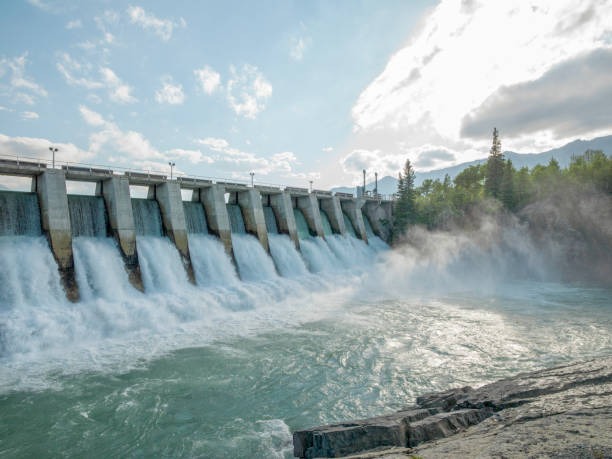Dams are one of the most impressive feats of civil engineering, holding back vast amounts of water while providing flood control, irrigation, and hydroelectric power. But have you ever wondered how a structure can resist such enormous pressure without collapsing? In this article, we’ll break down the science behind dams and how they keep our cities safe and powered.
1. The Science Behind Dams
At their core, dams work by blocking the natural flow of a river, creating a reservoir where water is stored. But to withstand the pressure of millions (sometimes billions) of gallons of water, they must be built using precise engineering principles.
👉 Key Forces Acting on a Dam:
- Hydrostatic Pressure – The force exerted by the stored water, increasing with depth.
- Gravity – Helps keep the dam stable by pressing it downward.
- Seepage Forces – Water tries to find its way through the dam, which engineers must manage.
💡 Fun Fact: The taller the dam, the greater the pressure at its base, which is why many dams have a thick foundation that tapers as it rises!
2. Types of Dams and Their Construction
Different dams are designed based on location, purpose, and geological conditions. Here are the most common types:
a) Gravity Dams 🏗️
Example: Hoover Dam (USA)
- These rely on their immense weight to resist the force of water.
- Built using concrete or masonry, they have a thick base that holds them firmly in place.
b) Arch Dams 🌉
Example: Idukki Dam (India)
- These have a curved design that directs water pressure toward the valley walls.
- Ideal for narrow canyons with strong rock formations.
c) Embankment Dams 🌄
Example: Three Gorges Dam (China)
- Constructed from compacted earth and rock, making them cost-effective for large-scale projects.
- They rely on their mass and waterproof core to stop water from passing through.
d) Buttress Dams 🏛️
Example: Daniel-Johnson Dam (Canada)
- Feature a series of supports (buttresses) that help hold the dam up with less material.
- Used when foundation conditions don’t allow a massive gravity dam.
3. How Dams Manage Water and Prevent Floods 🌊
Dams are designed to store excess water during heavy rainfall and release it gradually to prevent flooding. Here’s how they control water levels:
✅ Spillways – Channels that allow controlled water release, preventing overflow.
✅ Gates & Valves – Regulate how much water is let through for irrigation and power generation.
✅ Diversion Tunnels – Used during dam construction or extreme flooding to redirect water safely.
🌟 Case Study: The Hoover Dam
During heavy rainfall, the Hoover Dam’s spillways can handle over 400,000 cubic feet of water per second—enough to fill 4 Olympic-sized swimming pools every second!
4. Hydroelectric Power: Turning Water Into Electricity ⚡
Many dams generate electricity using hydropower turbines. Here’s how it works:
1️⃣ Water from the reservoir flows through penstocks (large pipes).
2️⃣ The moving water spins turbines, which are connected to generators.
3️⃣ The generators convert mechanical energy into electricity, which is sent to the power grid.
🔋 Fun Fact: The Three Gorges Dam in China is the largest power-generating dam in the world, producing over 22,500 megawatts—enough to power millions of homes!
5. Environmental & Structural Challenges
While dams provide water storage, flood control, and renewable energy, they also come with challenges:
🚧 Sediment Buildup – Over time, rivers deposit sediment behind dams, reducing reservoir capacity.
🐟 Impact on Wildlife – Fish migration is disrupted, requiring fish ladders or bypasses.
💥 Structural Risks – Poor design, extreme weather, or earthquakes can cause dam failures (e.g., the Banqiao Dam disaster in China, 1975).
Engineers continuously monitor and reinforce dams to prevent failures and maintain their longevity.
Conclusion
Dams are engineering marvels that serve as lifelines for water supply, flood control, and electricity. Whether it’s a towering concrete structure like the Hoover Dam or an earth-filled embankment like the Three Gorges Dam, these structures are crucial for modern civilization.
Next time you see a dam, you’ll know just how much science and engineering go into holding back millions of gallons of water! 🚧💡


